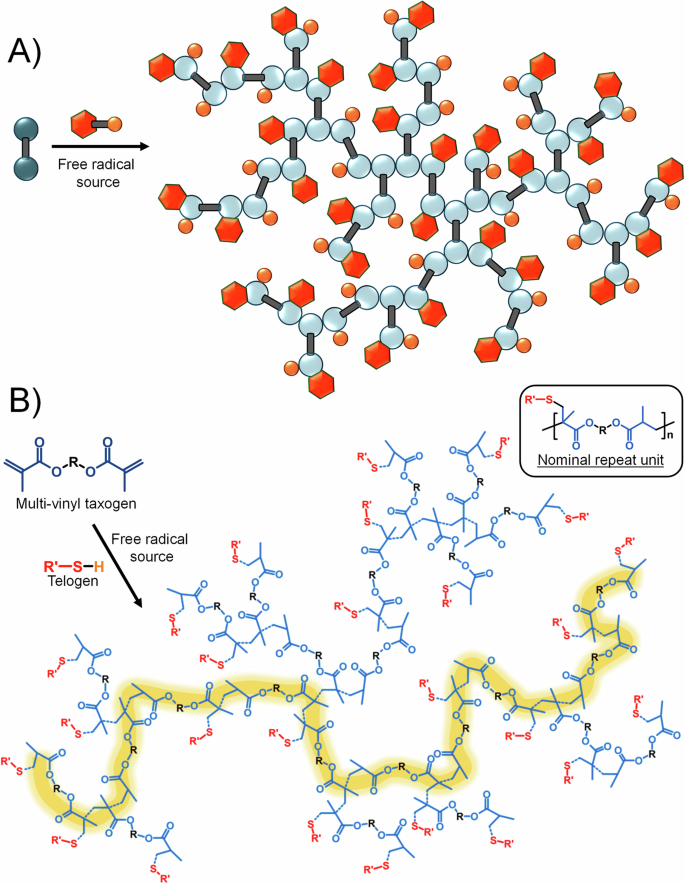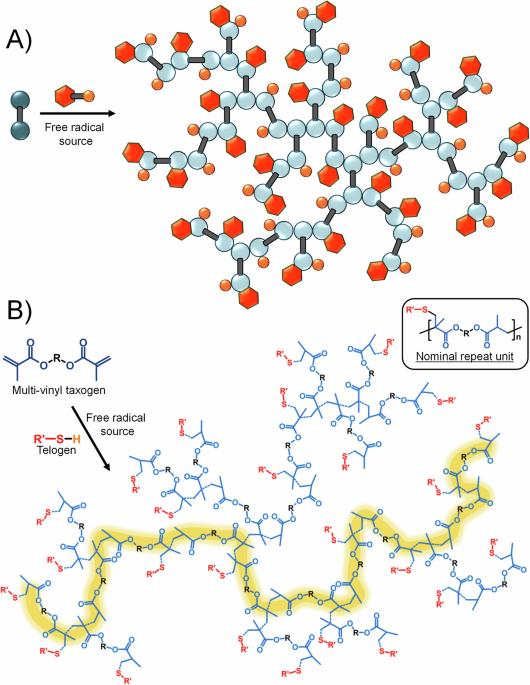通过端原和类源选择,控制利用转移主导型分支自由基端粒化合成的支化聚合物的酶水解。
IF 5.9
2区 化学
Q1 CHEMISTRY, MULTIDISCIPLINARY
引用次数: 0
摘要
随着越来越多的应用领域依赖聚合物材料,诱导、设计和控制降解的新途径显然非常重要。在此,我们介绍一种以前未报道过的方法,即通过新型自由基聚合物合成策略转移主导型支化自由基端聚(TBRT)形成的高分子量支化聚合物的酶水解控制。改变 TBRT 聚合物的化学性质可以通过端基选择和多乙烯基单体(MVT)设计来实现,我们展示了端基驱动的酶催化水解控制,以及在容易合成的 MVT 中仔细放置易水解基团的影响。我们的研究结果表明,利用传统的自由基化学和不饱和单体作为高支化聚合物结构的原料,在设计未来材料方面具有相当大的潜力,这些材料能以可变和可控的速度降解成分子量极低的副产品。本文章由计算机程序翻译,如有差异,请以英文原文为准。


Controlling enzyme hydrolysis of branched polymers synthesised using transfer-dominated branching radical telomerisation via telogen and taxogen selection
With the ever-growing reliance on polymeric materials for numerous applications, new avenues to induce, design and control degradation are clearly important. Here, we describe a previously unreported approach to controlling enzymatic hydrolysis of high molecular weight branched polymers formed from the new free-radical polymer synthesis strategy transfer-dominated branching radical telomerisation (TBRT). Modifying the chemical nature of TBRT polymers may be accomplished through telogen selection and multi-vinyl taxogen (MVT) design, and we show telogen-driven control of enzyme-catalysed hydrolysis and the impact of careful placement of hydrolytically susceptible groups within readily synthesised MVTs. Our results indicate that utilising conventional free-radical chemistries and unsaturated monomers as feedstocks for highly branched polymer architectures has considerable potential for the design of future materials that degrade into very low molecular weight byproducts at variable and controllable rates. With the ever-growing reliance on polymeric materials for numerous applications, new avenues to induce, design and control degradation are clearly important. Here, the authors report an approach to controlling the enzymatic hydrolysis of high molecular weight branched polymers formed from transfer-dominated branching radical telomerisation, through telogen selection and multi-vinyl taxogen design.
求助全文
通过发布文献求助,成功后即可免费获取论文全文。
去求助
来源期刊

Communications Chemistry
Chemistry-General Chemistry
CiteScore
7.70
自引率
1.70%
发文量
146
审稿时长
13 weeks
期刊介绍:
Communications Chemistry is an open access journal from Nature Research publishing high-quality research, reviews and commentary in all areas of the chemical sciences. Research papers published by the journal represent significant advances bringing new chemical insight to a specialized area of research. We also aim to provide a community forum for issues of importance to all chemists, regardless of sub-discipline.
 求助内容:
求助内容: 应助结果提醒方式:
应助结果提醒方式:


